|
Here are just a few of this week's stories from the Michigan Department of Natural Resources:?
See other news releases, Showcasing the DNR stories, photos and other resources at Michigan.gov/DNRPressRoom.
PHOTO FOLDER: Larger, higher-res versions of the images used below, and others, are available in this folder.
 Want to see more pictures like this, taken by Michigan state parks photo ambassador?Marybeth Kiczenski at Silver Lake State Park in Oceana County? Visit?Instagram.com/MiStateParks?to explore photos and learn more about the photo ambassadors! For more on the photo ambassador program, email Stephanie Yancer.
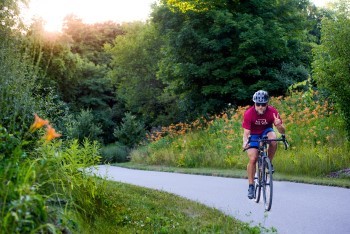
Two trails and two communities are now recognized as Pure Michigan Trails and Pure Michigan Trail Towns by the Michigan Department of Natural Resources. The program ? designed to help boost Michigan?s position as the ?Trails State? ? recognizes locations that represent some of Michigan?s best trail experiences.
Tim Novak, DNR state trails coordinator, announced the 2023 recipients during the Governor?s Conference on Tourism April 11 in Grand Rapids.
2023 Pure Michigan Trails:
- The aptly named Paint Creek Trail (Oakland County) begins in downtown Rochester and meanders north along the creek to where its headwaters flow out of Orion Lake. This beautifully wooded nonmotorized trail travels along Paint Creek ? one of Michigan?s premier cold-water trout streams ? and connects to the Polly Ann Trail and Bald Mountain Recreation Area via connector paths. It was the first nonmotorized rail-trail in the state.?
- The Cass River Water Trail (Saginaw and Tuscola counties) winds for 37.5 miles between two counties and six townships. Featuring 13 boating access sites, two portages and thousands of breathtaking views, the trail offers paddlers diverse paddling elements and passes through many small towns. Paddlers can rest at one of many picnic areas, enjoy downtown Frankenmuth or Vassar, take in the sites of the Shiawassee National Wildlife Refuge and more. Endless local volunteer support is the reason paddlers from around the region regard the trail so highly.
2023 Pure Michigan Trail Towns:
- Chelsea (Washtenaw County) is known for its outstanding commitment to trails, demonstrated by its advancement, development and advocacy efforts. A vast trail network connects Chelsea?s lively downtown, the local sidewalk and pathways system, the DTE Energy Foundation Trail, neighborhoods, historic attractions, local parks, Waterloo and Pinckney recreation areas, and more. The Washtenaw Border to Border Trail will soon run through the downtown once the trail section is fully constructed.
- St. Ignace (Mackinac County) has a proven track record for developing, funding, building and advancing trails integral to connecting Michigan?s peninsulas. One of the key components is the North County Trail, which travels along the waterfront through the heart of the city. In addition, strong partners have helped advance several recent projects, including the development of the Silver Mountain Bike and Hike Trail and a secondary trail between Straits State Park and the downtown, among other projects.
Each year, the DNR and Pure Michigan spotlight some of the state?s best trails, over both land and water, and trail destinations through the Pure Michigan Trail and Trail Town designation program.?
Applications for the 2024 Pure Michigan Designated Trails and Trail Towns will open October 2023. Visit the Pure Michigan Trail and Trail Town Program page to learn more or apply.
Questions? Contact Tim Novak, DNR state trails coordinator, at 517-388-8347.
|
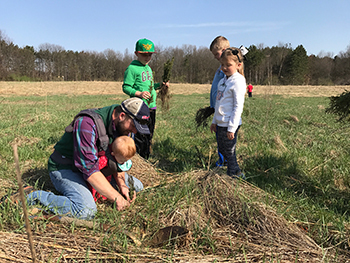
On the Ground, Michigan United Conservation Clubs? volunteer stewardship and habitat improvement program in partnership with the DNR, turned 10 this year and has plans to celebrate its 200th project in a big way.
MUCC will mark the milestone May 13 in Manistee County, when volunteers will plant more than 2,000 native wildflower plugs near 6 Mile Bridge in the Huron-Manistee National Forest.
The event will run from 10 a.m. to 3 p.m., and all attendees will receive free lunch and an appreciation gift. Volunteers should register for the event.
The native wildflower planting project, in collaboration with the DNR and the U.S. Forest Service Cadillac-Manistee Ranger District, will help improve habitat at an oak-pine barrens restoration site.
This semi-open, fire-dependent savanna community, midway between a forest and a prairie, is one of the most imperiled in Michigan. It provides habitat for a variety of rare species, including dusted skipper, grizzled skipper, monarch butterfly, numerous bumblebees, eastern box turtle, red-headed woodpecker and eastern massasauga rattlesnake. It?s also home to game species such as wild turkey, white-tailed deer and even the occasional black bear.
|
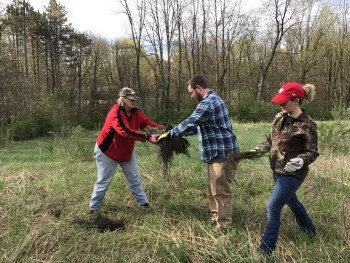
?We are looking forward to highlighting not only the exceptional work on the ground, but the material relationships that made the work possible. The value of these habitat restoration projects cannot be understated, and we have collaborative relationships with strong partners to thank for their successful implementation,? said Cadillac-Manistee District Ranger Scott Peedle.?
Funded in part by the DNR, On the Ground has engaged nearly 4,000 volunteers who have helped improve more than 3,500 acres of public land throughout the state since 2013.?
?For the past decade, On the Ground has not only fostered relationships between volunteers and natural resources, but it has also been a driving force in connecting conservation organizations in Michigan through ?boots on the ground? work,? said MUCC habitat volunteer coordinator Kristina Kennedy. ?By participating in events like this one, people can give back to the resources they care about by improving and enhancing wildlife habitat on their public lands.?
Questions? Contact Kristina Kennedy at 517-346-6456.
|
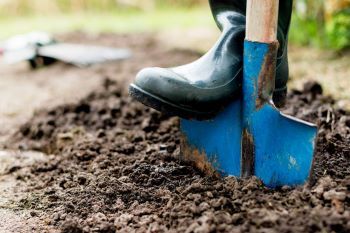
Happy Earth Week! This celebratory week ? April 14 to 22 ? brings people together to celebrate Earth?s beauty and work toward a healthier, more sustainable world. Looking for a way to make an impact in your community this Earth Day, April 22? Consider planting a tree!
Trees provide many ecological benefits, supporting other natural systems by improving water quality, soil stability and wildlife habitat. Check out our tree planting resources below ? be a pal to your new tree by planting it using these best practices, so it can be a pal to you for many years to come!
Tree selection
?Right tree, right place,? is the gold standard of the urban forestry community. When considering what tree species to plant, think: location, location, location. How large will the tree get over time? Is the soil prone to flooding, or does it stay dry? How much sun does this spot get? Will the tree be exposed to road salt??These are important questions to ask when selecting your tree species.
Want to give your local ecosystem a boost? Plant a native tree species. They play an important role in the local food web. If a native tree species is the ?right tree? for your place, your local songbirds and pollinators will thank you.
Sometimes it?s not possible to find a good fit, though: urban forests are healthiest when they are made up of diverse species; and because all that concrete and steel makes cities hotter, some native species won?t thrive there. Make sure you choose the right tree for the right place.
Planting a tree
Sadly, some trees don?t make it to maturity because of poor planting. That won?t happen to you though, because you?ll have this handy-dandy Tree Planting Guide to set your new tree up for success!
When planting, place the tree?s root flare ? where the tree?s trunk begins to ?flare? outward to meet the roots ? slightly above soil level ? and please, no mulch volcanoes. You may see them around town, a heap of mulch piled up around the trunk, but this can lead to decay and other health issues. Give your tree room to breathe with a three-inch layer of organic mulch and a six-inch bare circle around the trunk.?
Now that you?re prepared to plant the right tree in the right place (and in the right way), you?re ready to celebrate!
Find more tree planting resources and add your newly planted tree to our interactive map to help us reach 50 million trees planted by 2030. Happy Earth Day!
Questions? Contact Lawrence Sobson.
|

Calling all woodstove users and backyard bonfire lovers: Permits are now available for collecting fuelwood for personal use from select state-managed land in the Upper Peninsula and northern Lower Peninsula.
Permits cost $20 per household with a limit of one per year. A permit allows you to collect five standard cords of wood. A standard cord is a stack measuring 4 by 4 by 8 feet. All wood must be collected from trees that are both dead and downed within 200 feet of the road.?
Permits are valid for 90 days after the date they are issued, but all expire on December 31 regardless of when they were purchased.?You have three convenient options to get your fuelwood permit:
A few rules are in place to ensure wood is collected safely and sustainably:
- Do not drive vehicles off the road, though you may use a wheelbarrow or handcart to carry wood to your vehicle.
- Gather wood only from already dead and downed trees; do not remove wood from trees that are dead and still standing.
- You must have your permit with you and fill out the collection log before transporting your wood. Failure to do so could result in a citation.
- You may not sell or trade firewood.
When moving firewood across distances, there?s always risk of spreading invasive pests and diseases. Collect wood near where it will be used.?
For more information on fuelwood permits and list of frequently asked questions, visit Michigan.gov/Fuelwood.?
Questions? Contact Jake Reid at 517-284-5908.?
|
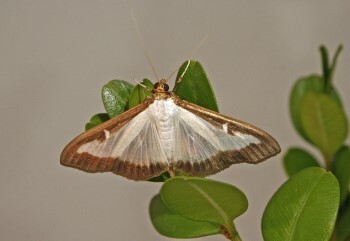
The Michigan Department of Agriculture and Rural Development is implementing a new quarantine for the invasive box tree moth.
In case you missed it, the invasive moth was detected multiple times in Lenawee County last year. Box tree moths are not a threat to Michigan?s natural resources, but they can lead to significant defoliation and death of ornamental boxwood.
The quarantine went into effect April 10. Read the full release for details.
|
|